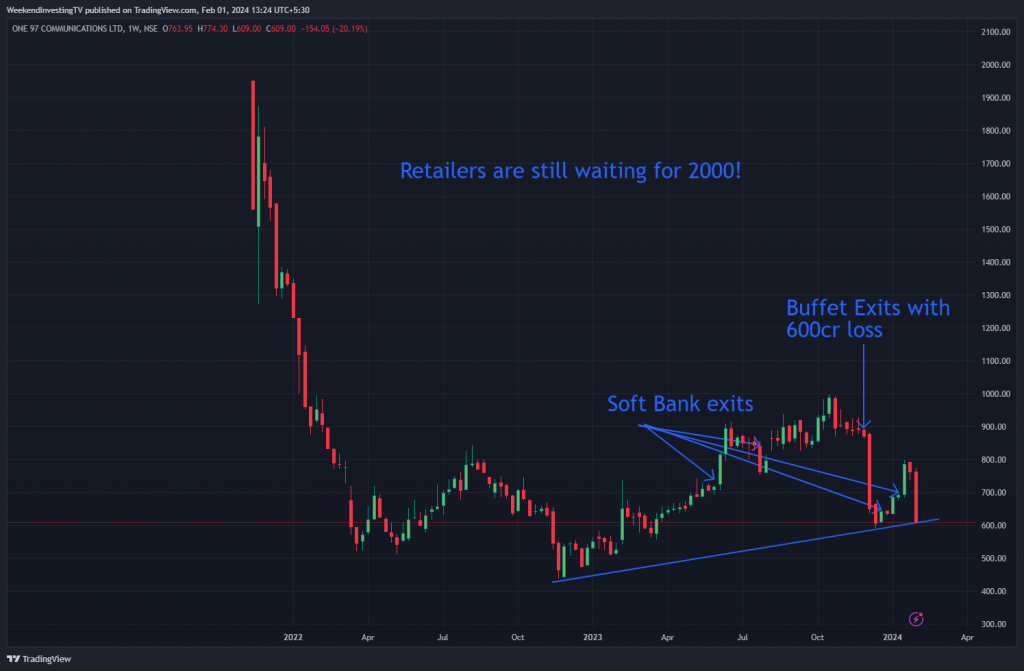Lessons from the Paytm Debacle
Paytm, also known as One97 Communications Limited, has recently experienced a significant downfall in its stock price. This has sparked discussions and raised important lessons for investors to consider. In this article, we will analyze the factors that contributed to Paytm’s decline and share valuable insights for investors.
The IPO and Shareholder Friendliness
Upon Paytm’s listing in 2021, it became evident that the promoters did not leave anything on the table for the retailers. This indicated that the management was not particularly shareholder-friendly. This initial observation should have raised concerns about the potential performance of the stock.
A Pump and Dump Scenario
The sharp drop in Paytm’s stock price from 2000 to nearly 600, leading to a 575% market cap loss within a few months, signalled that the stock was significantly overpriced and potentially involved a pump and dump scenario. This sudden decline should have served as a red flag for investors.

One key lesson from Paytm’s downfall is the importance of paying attention to market trends. The trend often precedes the news and developments related to a company. Paytm’s downward trend should have indicated the underlying weaknesses in the business fundamentals, even before other negative news surfaced.
The Exit of Warren Buffett and Softbank
The exit of renowned investor Warren Buffett is another crucial event that should have caught the attention of investors. Buffett seldom exits his investments easily, making his decision to sell Paytm stock despite incurring a significant loss of 600 crore rupees a cause for concern. It is essential to observe what seasoned investors like Buffett are doing, rather than solely relying on their public statements.
Additionally, Softbank, a primary venture capitalist in Paytm, gradually reduced its stake in the company. This gradual exit should have served as a warning sign for investors, indicating that even a major investor was losing confidence in Paytm’s future prospects.
Momentum investing, a strategy focused on riding the wave of positive stock trends, has its own set of protective mechanisms. Even in such strategies, Paytm failed to exhibit positive momentum, suggesting that the stock was weak. Only during a brief period in June, July, August, and October was there a possible uptrend, which could have potentially attracted some investors. However, a well-implemented momentum investing strategy would have resulted in an early exit from Paytm, mitigating losses.
One recurrent psychological bias among retail investors is the blind faith in a stock’s future recovery. Many investors tend to accumulate falling stocks, believing that eventual recovery is inevitable. However, this blind faith in the future is not always justified. The reality is that companies often face disruptive challenges, and not all companies manage to survive and thrive in the long run. Recognizing early warning signals and avoiding blind faith is essential for successful investing.
While investing in a single stock carries higher risks, diversifying one’s portfolio provides an effective risk management strategy. In the case of Paytm’s downfall, investors who had diversified portfolios would have been less impacted by the stock’s decline.

If you have any questions, please write to support@weekendinvesting.com









